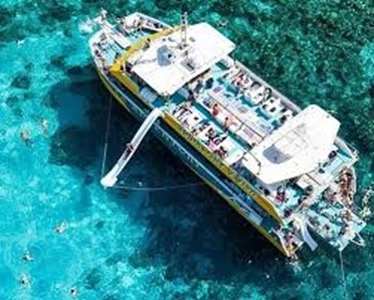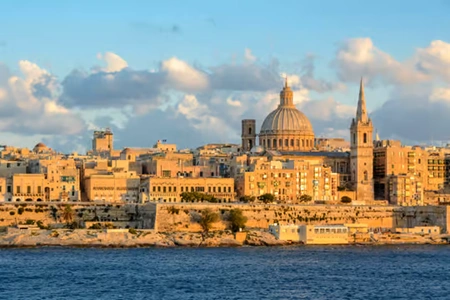Victoria Lines
Malta has the "Big Error" which is a geological name for a fracture in a rock formation caused by a shift in tectonic plates. This naturally formed geographical barrier runs from the west coast to the east, at the height of Rabat, Bingemma, Mosta and Madliena.
Excavations of the remains of a citadel show that this natural barrier was already used as a defence in the Bronze Age.
From the position of Torri Falca from the 16th century and Nadur Tower in Binġemma in the 17th century, the Great Error also appears to be used for defence.
Around 1710 the Order of St. John ordered that the defence of the country had to be strengthened.
In the period 1714 to 1716, the construction of coastal ramparts, coastal batteries and redoubt started. In 1722 it became clear that there was insufficient manpower to man all the Fortifications.
In the event of an invasion, the Order of St. John decided to withdraw into the Great Error.
The Order of St John began in 1723 with the construction of ramps close to the Great Error, and Bastions were also built with curtain walls with various redans. Parapets were also built in the places Falca, Naxxar, San Pawl tat-Tarġa and at the Madliena tower. The construction was completed in 1731 and a defence line had been realized, which was called the Falca Lines.
During the French invasion in 1798, the Naxxar militia, which defended the country with the Falca Lines, suffered badly because the French had landed behind the lines.
The Maltese resistance at the Falca Lines did not last long.
Now with the long-distance weapons, the geographical location of Malta, from a Military point of view, is less strategically located. However, in the 19th century there were numerous international developments, including the opening of the Suez Canal in 1869. These developments are important for making new military strategic considerations, which often resulted from new insights, which resulted in defensive changes, additions, modifications, etc.
In 1870 the British started the construction of this unique monument of military architecture "The Victoria Lines".
The purpose of the wall was to divide the island of Malta into two parts. The wall was to prevent invading troops from the north who encountered a physical barrier and could not advance to the south to attack the port with artillery.
For the route of this 12-kilometer-long defence line, natural barriers also known as the Great Error were used as much as possible, supplemented by various fortifications and military elements such as Forts, howitzer, batteries, sconces, infantry lines and searchlight emplacements. In many places the wall is only two meters high. The defending soldiers were in their protected lookout post in the mountain ridge, which was 150 meters higher than the wall. From this protected position the soldiers could take the enemy under fire.
Military exercises that were held showed that there was a weak spot in the design. Enemy forces could possibly land in Fomm ir-Riħ Bay and thus get behind the protected line. This problem was addressed with field guns. It also turned out that in the north-west there were insufficient barracks, which were added.
The wall was initially named North West Front. In 1887 the name changed to Victoria Lines to commemorate the Queen Jubilee of Queen Victoria of the United Kingdom. Part of the Line is also called Dwejra Lines and another part tat-Tarġa Lines
The defence line was realized in 1899.
Military training exercises were organized in May 1900, which made it clear that the defensive value of the Victoria Lines was of very limited value. In 1907 the Victoria Lines as a whole were written off as defensive value.
Despite the fact that the Fortress wall has collapsed in many places, the Victoria Lines is extremely suitable to follow during a walking tour. Some parts of the Victoria Lines are located at the highest point of Malta, around 200 meters above the sea level. In addition to being able to enjoy the not yet overly developed north of Malta during a walk, you will also come across a beautiful view of Gozo and Comino and on a clear day you will also clearly see Sicily.
On our map you will find various markers from which you can walk the route. Good shoes and a reasonable condition are important for this walking tour.
Opening hours | Daylight walk. Sometimes the path is overgrown, protective clothing is advisable. |
Last admission | Advice 120 minutes before sunset |
Ticket / admission fee | |
| Everyone | Free |
Address and street / location can be found on our map, click on Guide in the menu bar and you will get a map with markers. | |
Book: Buy tickets for place of interest. sights, hop on hop off buses, exhibitions, safari, etc or book and tour. | |





